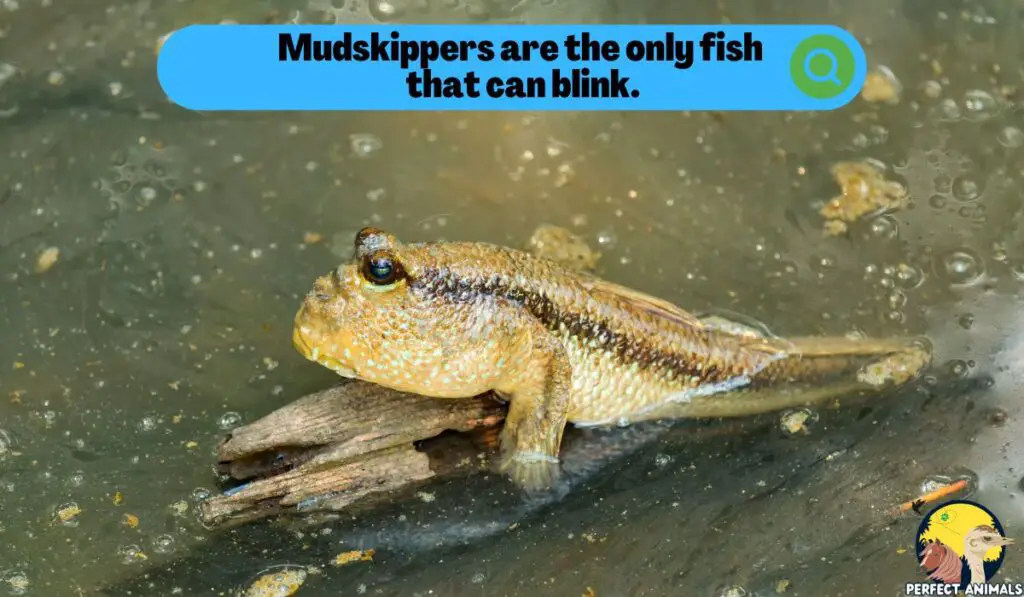Have you ever wondered if fish blink? It’s an interesting question that you may not have thought much about before.
But when you take a closer look at how fish eyes work, it opens up some fascinating facts about how these aquatic creatures see and sleep.
In this article, we’ll dive into whether various fish species have the ability to blink. We’ll explore how their eyes differ from human eyes and compare blinking across different types of fish.
You may be surprised to learn that some fish sleep with their eyes open!
Let’s start by looking at how fish eyes work in the first place.
Do Fish Blink?
When it comes to fish, blinking works a bit differently than it does in humans.
Fish don’t have eyelids like we do. Their eyes are instead covered by a transparent membrane.
This membrane protects the eye from debris and damage. But it means fish don’t have the ability to actively close their eyes and reopen them.

So in the strict sense of closing and reopening their eyes, fish do not blink.
However, fish eyes do have ways to keep themselves moist and clean. Their eyes are able to move independently, so fish can submerge one eye at a time to wash away dirt and refresh their eyes.
Some species also have a nictitating membrane that sweeps across the eye to spread tears and mucus across the surface.
So while fish don’t blink in the same manner humans do, they definitely have mechanisms to take care of their eyesight while swimming in water.
The inability to close their eyes also means fish don’t have the same intermittent darkness that blinking provides humans.
Fish eyes are essentially open to stimuli at all times.
Their vision relies on focusing and orienting their eyes appropriately as they swim through murky waters.
Related Article – Can Sharks See in the Dark?
Do Sharks Blink?
Unlike many other fish, sharks do have eyelids! However, their version of blinking is a bit different than humans.
Sharks have a nictitating membrane that functions as a clear inner eyelid. It sweeps across the eye from the inside corner to cover and protect the surface.
This allows sharks to have their eyes open even when the nictitating membrane is drawn across.
So while the shark’s eyes are never fully closed or in complete darkness, the nictitating membrane does provide periodic sweeps across the eyeballs.
It helps spread tears and mucus to keep the eyes moist and debris-free.
Sharks also have a normal outer eyelid that closes when the shark is very still or resting on the seafloor.
During sleep, both the nictitating membrane and outer eyelid move to partly obscure the eyes.
But again, the shark’s eyes are never fully closed off from the environment even during sleep.
They can still perceive light and movement, albeit more dimly, while in slumber.
So yes sharks do “blink” via the nictitating membrane but not in the complete sense of closing their eyes like humans do.
Their version of blinking provides protection while still allowing sensory input.
You May Also Like – Do Turtles Have Teeth?
How Does the Eye of a Fish Work?
Fish eyes share some similarities with human eyes in terms of basic structure – they have a cornea, lens, iris, retina, and optic nerve.
But they are specially adapted for seeing clearly underwater.
One key difference is that fish lenses are much more spherical and bulbous than human lenses.
This rounded shape enables fish to see at a wide range of angles and takes in a panoramic view of their surroundings.
Their vision spans nearly 360 degrees around their body.
The cornea on a fish eye is also not flat like ours – it protrudes outward to further enhance their underwater vision.
This allows light to pass through and focus more readily despite being surrounded by water.
Additionally, fish pupils are fixed rather than dilating like ours. To adjust to light levels, they move their lens closer or further away from the retina instead of contracting the pupil.
This helps maintain visual acuity even in murky waters.
The retina contains rod and cone cells for low light and color vision.
But because fish are sideways swimmers, the retina is positioned on the topside of their head. This gives an upward view as they float with just the bottom half of each eye underwater.
In summary, the specialized spherical lenses, protruding corneas, and upside-down retinas allow fish to have excellent underwater eyesight and perception all around their body.
Their vision is finely tuned for life submerged.
You May Also Like – Do Sharks Travel in Packs or Alone?
Can Your Fish See You?
As fish owners, we often wonder if our aquatic pets are aware of us and can recognize us when we approach their tanks.
The answer is most likely yes, fish can see and recognize their human caretakers!
Fish have excellent vision and can discriminate between different shapes, colors, and movements. Their panoramic view allows them to spot any activity in front of their tank.
So when you walk up, they will detect your presence and form.
Studies have shown fish can be trained to recognize shapes, patterns, and even colors associated with being fed.
This suggests they have the visual capacity to associate their owners with food and care.
With regular interaction, they learn to discern you from other people.
Species like cichlids are especially intelligent and can differentiate between individual humans.
They get to know personalities and may show more interest, less fear, and excited behavior when their caretaker is near.
So the next time you peer into your fish tank, know that they are likely gazing back and aware it’s you.
Forming a bond by regularly feeding and interacting with your fish will allow them to see you as a recognizable part of their world.
You May Also Like – Do Seals Eat Penguins?
Are There Any Fish That Blink?
Out of all fish, mudskippers are considered the only ones truly capable of blinking.
Mudskippers are a special type of fish that spend much of their time out of water.

Their eyes bulge out of the tops of their heads similar to a frog’s eyes.
This allows mudskippers to actively close their protruding eyes by lowering specialized eyelid-like membranes.
So, submerged in water, they blink much like we do with full eye closure and reopening.
The ability to blink gives mudskippers an advantage when venturing onto land.
By moistening their eyes while exposed to air, blinking prevents their eyeballs from drying out. Other fish species don’t have this capacity.
So, the vast majority of fish are unable to blink in the way humans do. But the unique mudskipper has modified eyelids adapted for its amphibious lifestyle.
This grants mudskippers the exceptional ability to blink above and below the waterline.
How Do Fishes Sleep?
Fish don’t sleep in the same way humans do, but they do need rest. So how do fish actually sleep?
Most fish enter a lowered state of activity and awareness at night or by resting motionless on the bottom substrate. Their metabolism slows, and they become less responsive to stimuli.
Their sleep isn’t as deep or cyclical as human sleep. Fish don’t have fully closed eyes or complete unconsciousness. They can still see, breathe, and swim if disturbed.
But sleep is crucial for proper cell repair and functioning.
Some fish float in place with minimal fin movements when sleeping. Others wedge themselves into a secure spot. Species like electric eels and sharks must keep moving at a baseline to breathe.
Certain fish exhibit irregular eye movements during sleep, suggesting they may be dreaming!
Sleep also plays a role in forming memories and learning for many fish species.
You May Also Like – Do Fish Have Blood?
Final Thoughts
When you stop to think about it, the question of whether fish blink is quite fascinating. We’re so used to closing our own eyes and take for granted how essential blinking is.
But fish have evolved special mechanisms for vision without traditional blinking. Their methods for keeping eyes clean and moist are ingenious adaptations for seeing clearly underwater.
While most fish can’t achieve full eye closure, sharks and some other species do exhibit modified versions of blinking. And singular mudskippers can actively blink just like us terrestrial beings do.
There’s still much to learn about how fish see, sleep, and process visual information. Their unique eyes provide an intriguing window into a world very different from our own.
FAQs
Do fish have eyelids?
No, most fish do not have eyelids. Their eyes are covered by a transparent membrane for protection.
Do fish blink while sleeping?
No, fishes do not actively blink while sleeping. Their eyes remain open as they rest. But some species do exhibit eye movement during sleep.
Can fish see in the dark?
Yes, many fish can see in low light or dark conditions. Their eyes contain rod cells specifically for night vision.
What colors do fish see?
Most fish can see color, though not the full range humans do. They view reddish and greenish hues well but may see purples and violets as simply black or gray.
Resources – (for further reading)
Wikipedia – Vision in fish
Scholarly Community Encyclopedia – Vision in Fishes
The Evergreen State College – Fish – Comparative Physiology of Vision

Jamie has a rich understanding of marine life, garnered through extensive study and hands-on experience with various marine organisms. He has actively participated in marine education programs, broadening public understanding of the ocean’s intricate ecosystems.

